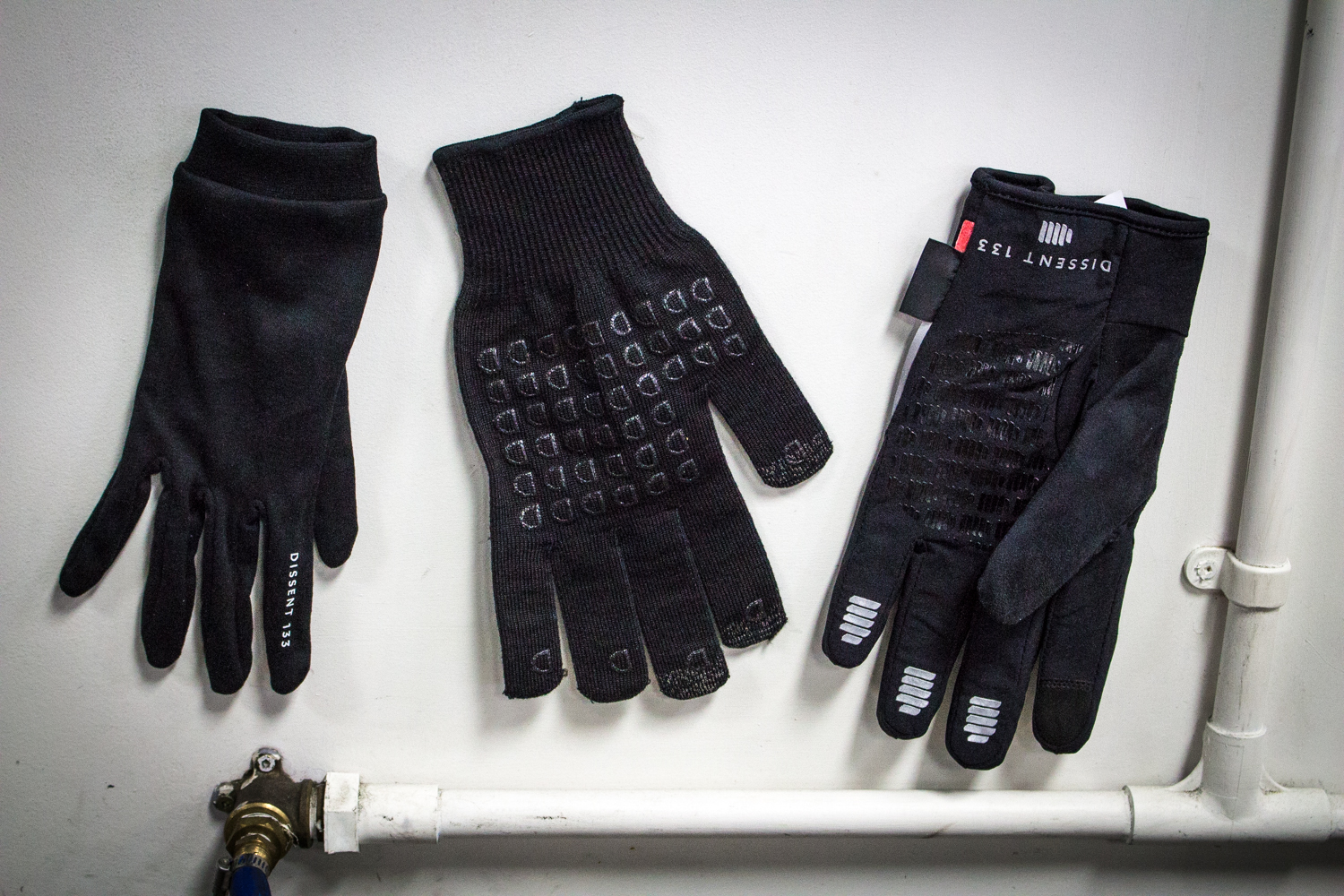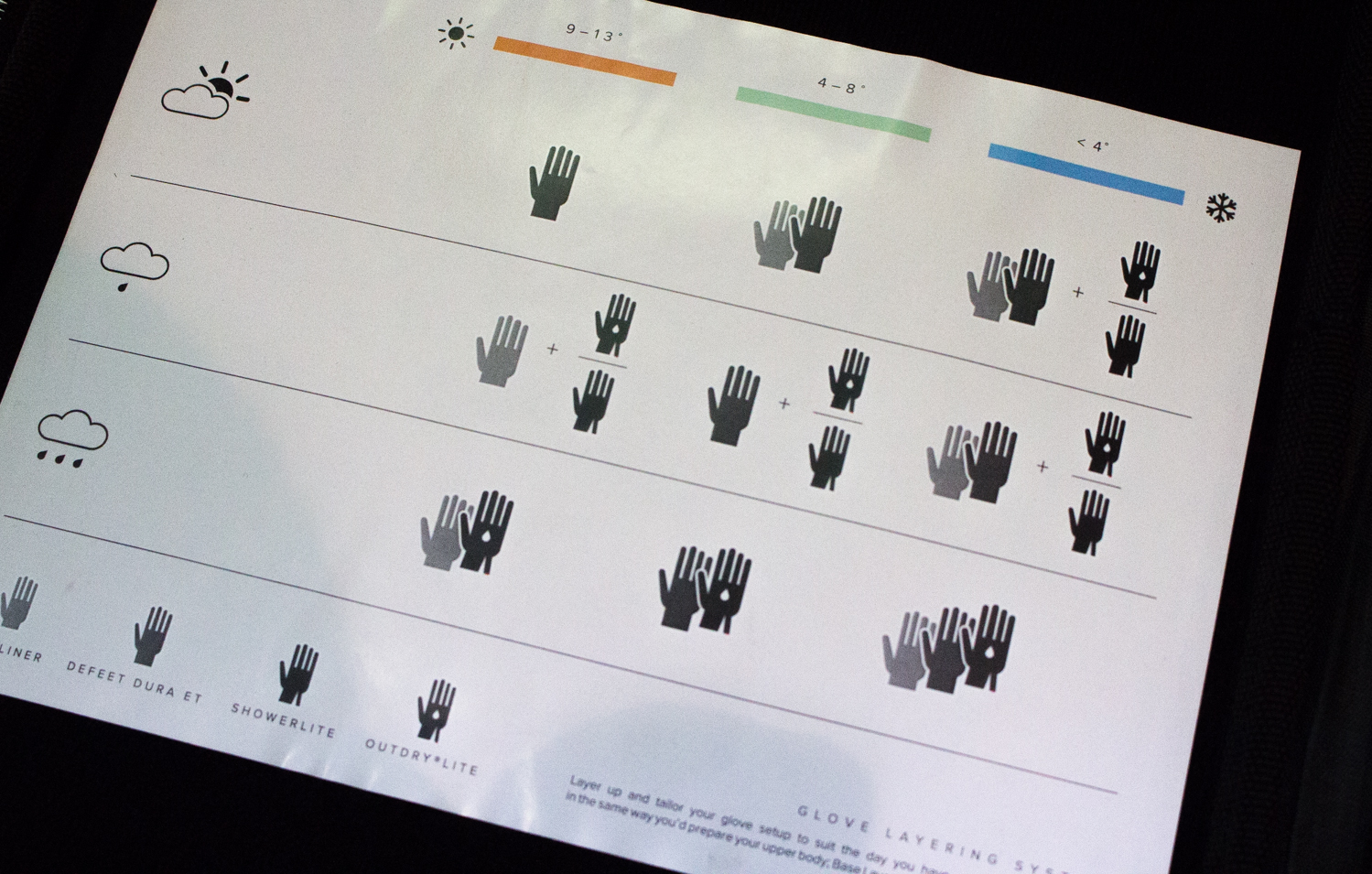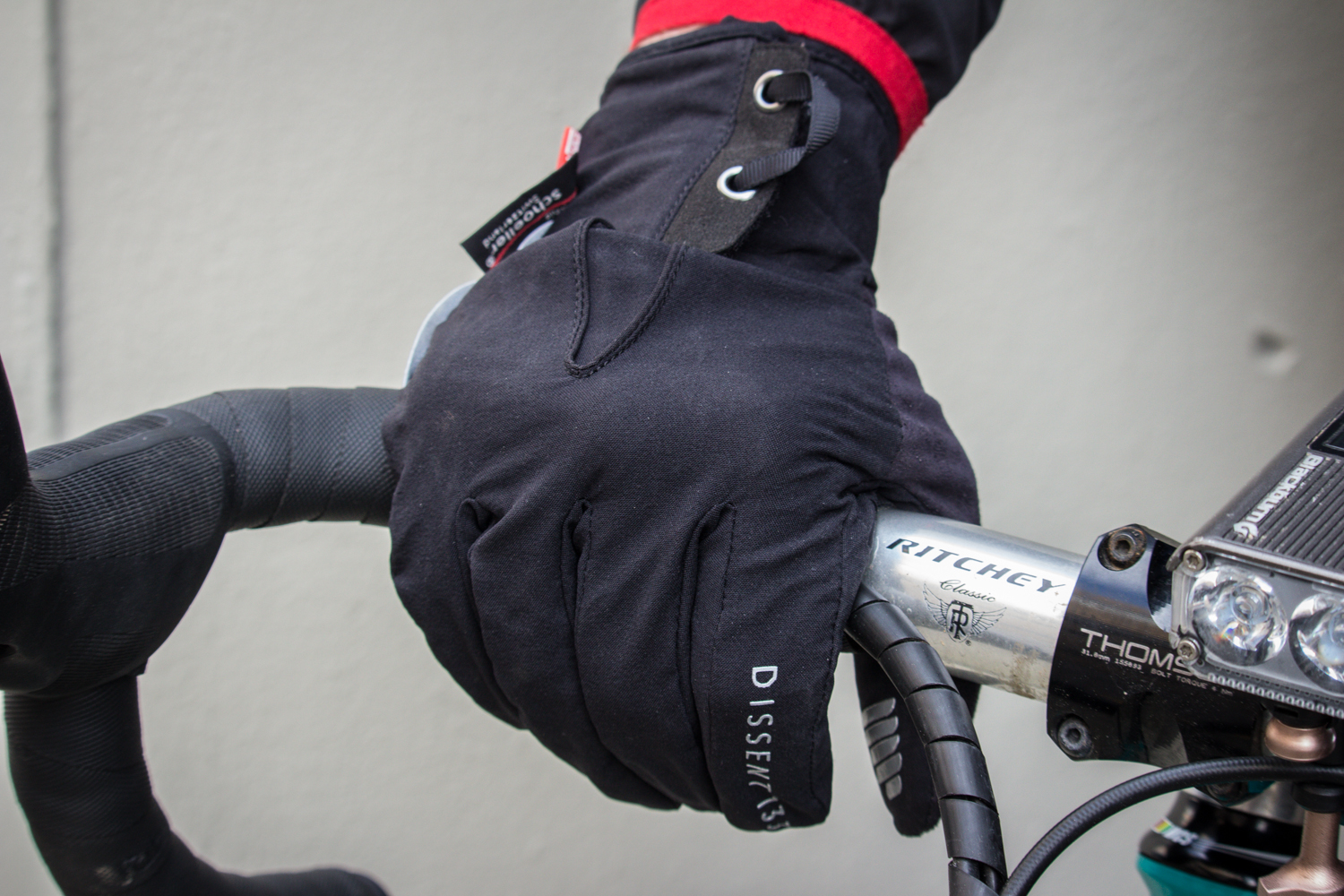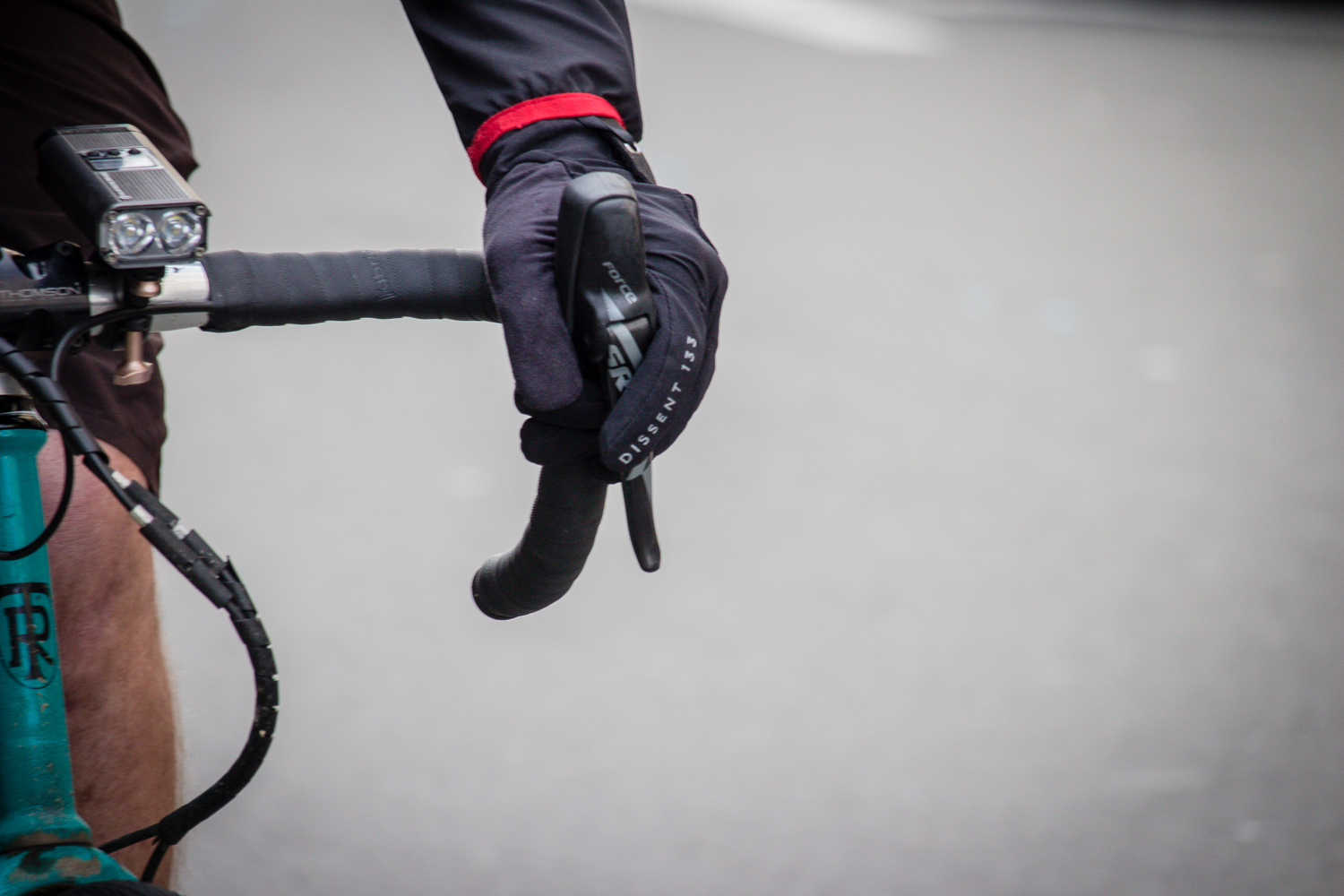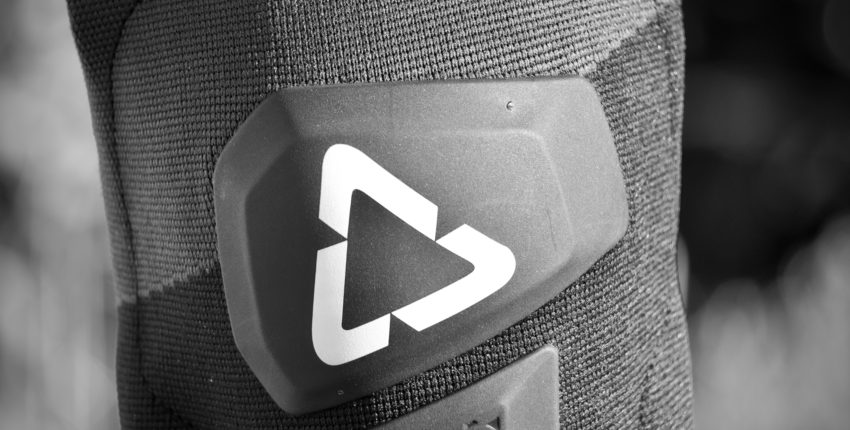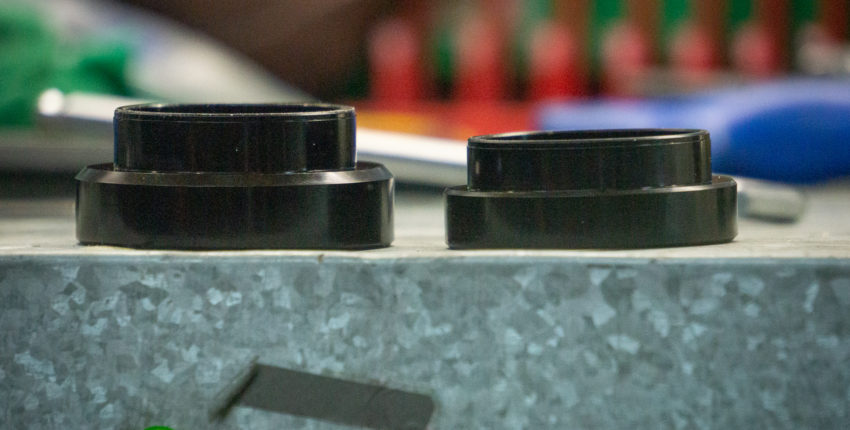Worn: Dissent 133 Glove System

Most people would probably own one or two sets of riding gloves; one for summer, one for winter. Mountain bikers probably only have their preferred long finger versions for year round off-roading. Roadies, maybe some fingerless or bare hands in summer, and something ‘thermal’ for the colder months. UK company Dissent 133 has come up with a glove ‘system’ that is designed to let you fine tune your digit covering in accordance with the weather and/or temperature.
The first thing you notice is the presentation, with a hard case containing three pairs of gloves and a chart to help with the layering choices, based on temps and whether it’s raining or not. I found the case to be handy for not very long, as I end up chucking everything into a bag anyway. But as a marketing tool it’s a nice touch, but you won’t find yourself slotting the case into your kit bag for a riding trip as it takes up more space than needed.
Inside you find the three varying layers, or ‘gloves’ as we used to call them!. The first layer is a thin glove made from silk, yes silk. They fit close to the hand to allow the layering of the other gloves, or can be used on their own, which I did quite a bit of, even in pretty cold temps. They are meant to wick away the sweat when worn under the other layers, and did a good job of that when worn solo too.
The feel of the bars and levers while wearing these is almost like not wearing gloves at all, something I’m a fan of whenever I can get away with it. For when it’s just too cold to go barehanded, these are a great option and have become a favourite bit of kit for my winter rides.
When it’s getting a bit lower in the single digit temperatures, the next layer comes into play. The DeFeet Duraglove has been another staple of mine over the years, so it was nice to see them being used in this system. I’ve always rated their feel and usability with road levers, as they are fairly thin, at least compared to some of the thicker gloves out there that more resemble ski mittens than cycling attire. You can slip these over the base layer and you’ll be set down to around 4ºc according to the chart, or even on their own if the base layer isn’t up to the job on their own but two layers is too much. Having those two layers though makes it easy to mix it up during a long ride when the weather is prone to changing, and stuffing them in a jersey pocket doesn’t take up much room at all.
The Duragloves that came in my kit were size large, which my existing models are too, but these seem to be made bigger for the layering, as the fingers are just too long. Especially the pinky, which is disproportionately long for some reason! I’d suggest going down a size or trying if you can first. Otherwise they are the same knitted construction with silicon grippers on the palm and fingertips, plus touch-screen friendly weave if you can’t stop playing with your phone or need to get those Insta shots done (guilty).
The third and final layer is the Outdry Lite, made for the Belgian conditions when it’s raining sideways and the wind chill is making its way deep into your bones. Waterproof, windproof fabric by Scholler, a Swiss company, is still pretty lightweight and not as bulky as you’d think before putting them on. Velcro and a lace closure snugs them up against water seepage, something I didn’t get to try but my friend/tester Jordan has done on several occasions, as he’s seemed to commandeered them full-time!
The feel on the bars and levers is still pretty good, especially with only the silk layer underneath, but gets a bit bulky with all three layers, but still impressively usable. Not having a thick thermal insulation layer helps here, with the thinner material still having excellent thermal and breathability qualities. They pack down pretty well into a jersey pock also, and have the touch-screen fingertips and some reflective piping to round out their features.
The Dissent 133 system is an idea we thought we wouldn’t need, but it’s one that has merit and has been utilised by us not only in a test sense, but one of practicality. For those in moderate climates it might be overkill, but for anyone who rides through the winter and encounters a range of temperatures and a bit of rain, it makes a lot of sense, and Dissent 133 has done a good job of getting each layer pretty well spot on.


